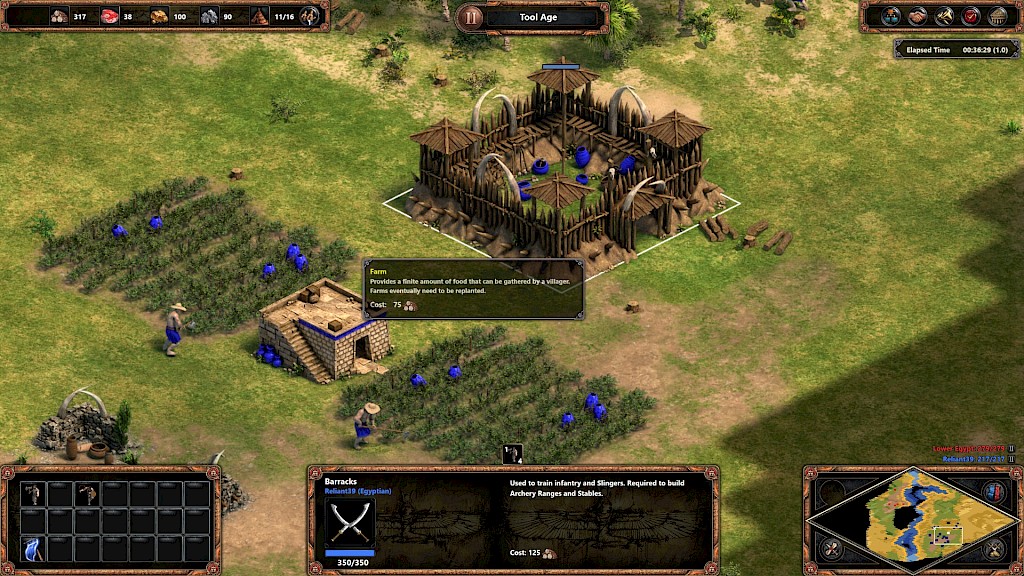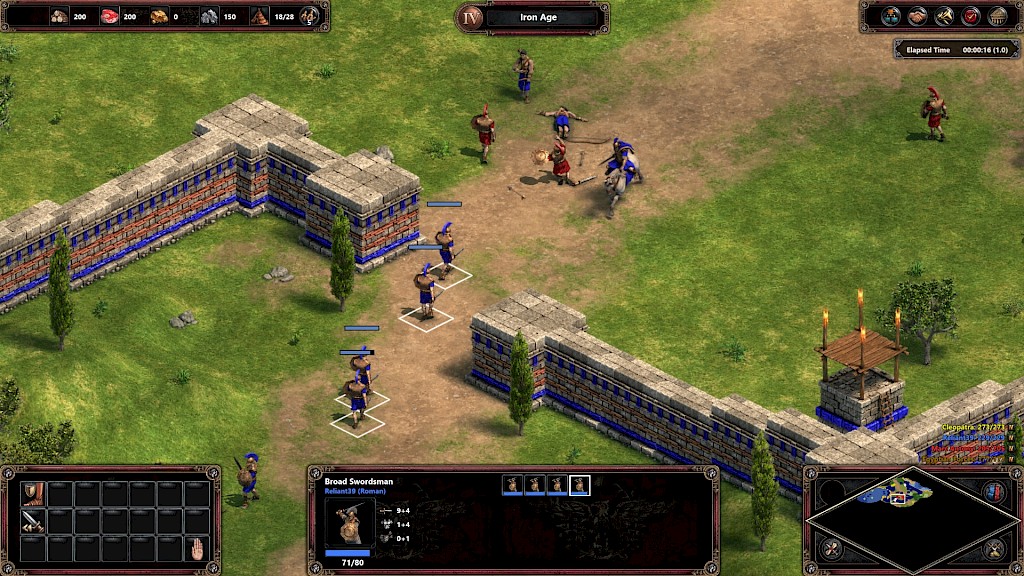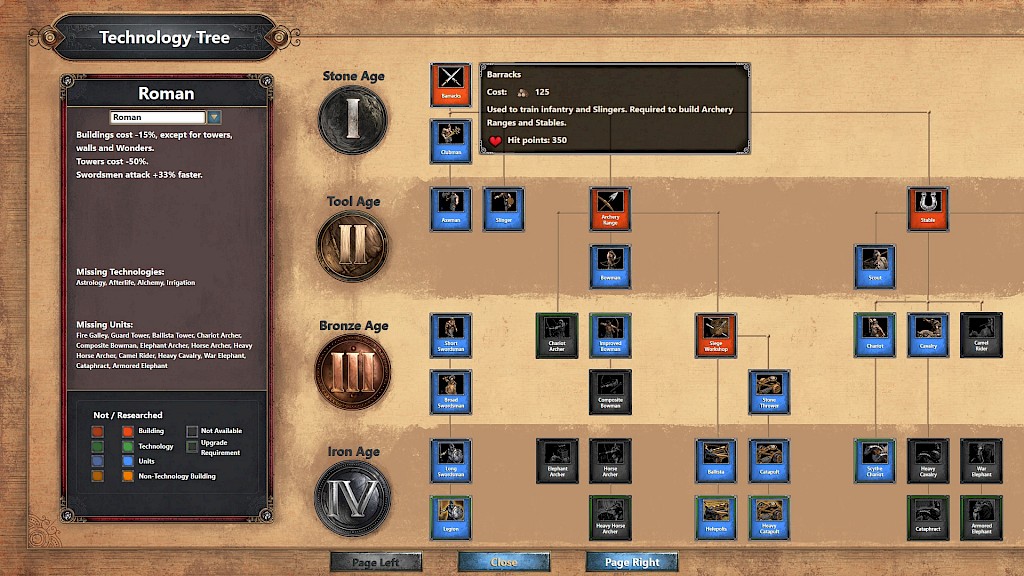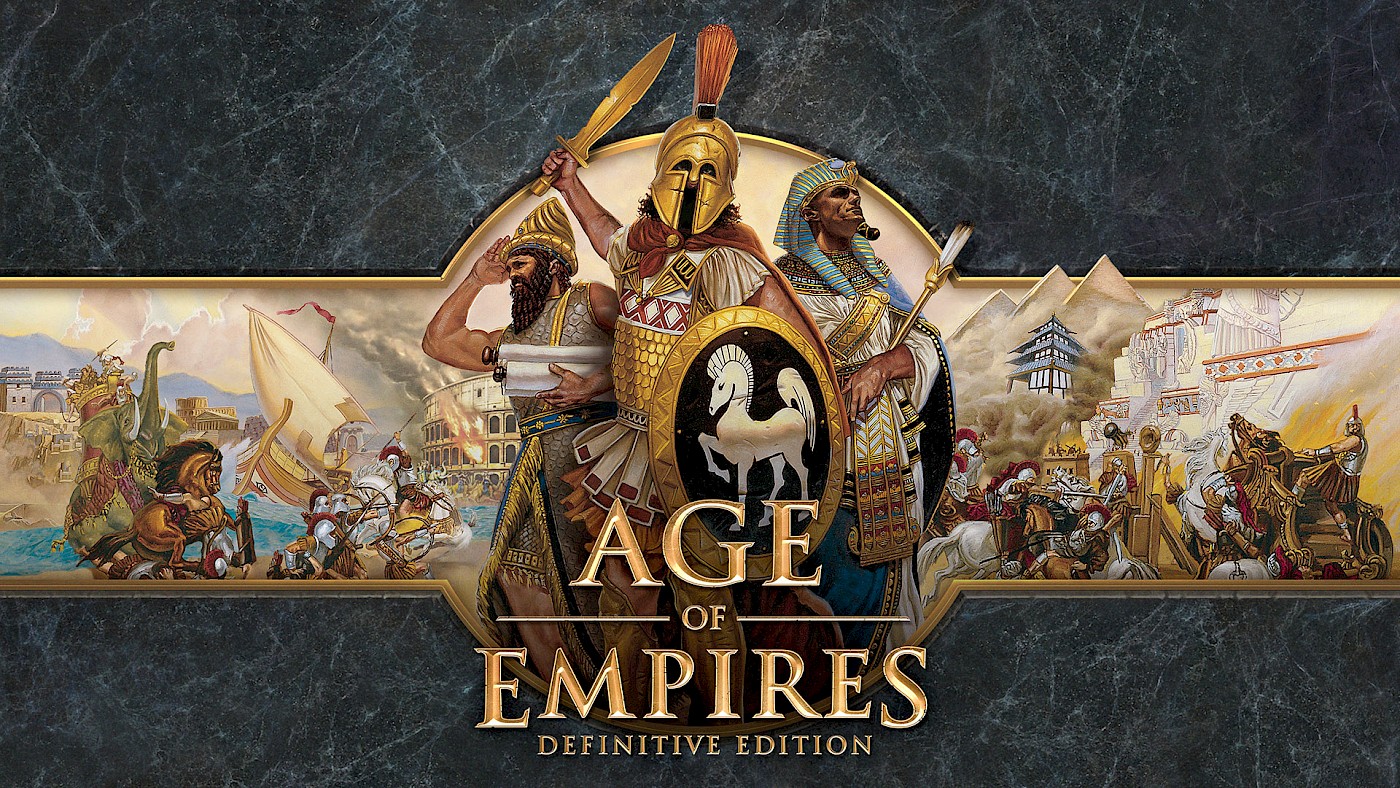The Age of Empires series was once a colossus in the genre of real-time strategy games. Unlike Civilization, you didn’t play in turns, but instead built up an economy and raised an army on-the-fly. But like Civilization and unlike other RTS games of the time, such as WarCraft and Command & Conquer, it offered something fresh and interesting to those of us hungry for a good-looking historical wargame to play on our computers.
The original Age of Empires was developed by the now-defunct Ensemble Studios and published by Microsoft all the way back in 1997. Last february, more than two decades after the game was first published, a new and remastered “definitive edition” of the game was released that completely updates the games graphics and sound, while keeping the original gameplay intact. Playing it again, it looks and sounds exactly as I remember the original game, even though it has obviously been massively improved.
Rule the ancient world
This very first instalment in the Age of Empires series is set in ancient times and allowes players to take control of the ancient Greeks and Egyptians. A unique feature of Age of Empires, which has naturally found its way into its sequels and spin-offs, is the “Age” concept: collect enough resources (food, wood, stone, gold) and you could “age up”, moving from the Stone Age to the “Tool Age”, Bronze Age, and finally the Iron Age. The Tool Age in the game is more or less analoguous with the Neolithic c.q. Copper Age. (The game fully embraces the concept of “block-time”, for better or for worse!)
There are a few different ways to win the game, but the most common way is by exterminating your opponents. Diplomacy is essentially non-existent, though paying tribute (in the form of resources) is a viable tactic in online multiplayer. In order to train military units, such as axeman and hoplites, you need to send villagers (i.e. “workers”) out to chop down trees, harvest berries, tend farms, mine gold, or quarry stone. If you have enough resources, you can tell your villagers to construct barracks or archery ranges, where you can train your units. In general, better, more “advanced” units require more and more varied resources than the cheaper, simpler ones.
Along the way, you’ll engage in the usual tactics familiar to those who’ve played real-time strategy games before. The terrain is covered by a shroud (black area) that gets revealed as you move units on the map, but areas outside your units’ and buildings’ line of sight is covered by the fog of war. So you’ll try to scout out the terrain, locating new resource nodes and figuring out where the enemy is and what they are doing. You’ll also send small groups of military units out to harass the enemy; cutting down villagers is always a useful tactic, since you can easily cripple the economy of a player who isn’t paying enough attention that way.

Once you have secured a good economy and built up a large and varied fighting force, you’ll want to attack the enemy. This is another reason why scouting is so valuable: most units are strong against certain units, and weak against others. Thanks to its historical setting, these relationships are easily intelligible. For example, spearmen are great against cavalry. So if your opponent has invested a lot in mounted troops, you’d be able to handily defeat them by pumping out lots of spearmen.
This is part of what makes a real-time strategy game so fun. You have to juggle the economic and the military sides, while at the same time keeping an eye on your enemy. It’s also this complexity that makes RTS games a daunting prospect to play online. I know that I’m not half as good as most other people online, so I tend to stick to the singleplayer portion of the game, where you even have the option to slow down time to make things easier for yourself.
As far as singleplayer is concerned, this version of the game includes all of the original games’ fairly lengthy campaigns, including the useful if somewhat dull tutorial campaign (set in ancient Egypt), as well as all of the campaigns and other improvements from the Rise of Rome expansion (1998).
The campaigns are generally fairly straightforward and generally light as far as story is concerned, more generally presenting interesting situations. For example, the fourth Greek campaign mission is very loosely based on the Trojan War and features “hero” units, including your hero Alexander (!). Your objective in this mission is to kill Hector and to capture the “treasure of Priam”.

Faction design in Age of Empires is interesting. There is a single template, consisting of units (e.g. axemen, spearmen, cavalry), structures (e.g. town centres, watch towers, docks), and technologies or advances (improvements to unit and/or building stats). However, every faction has access to only a subset of the total available units, structures, and technologies. For example, the Egyptians, Phoenicians, and Sumerians have access to the chariot archer, but the Greeks, Persians, and the Romans do not. Likewise, the heliopolis is available to the Greeks and Carthaginians, but not to the Babylonians. All units look alike, too: a Greek cavalry unit doesn’t look different from a Roman cavalry unit.
In contrast to units, buildings do come in sets that each have a different look, adding visual variety and flair to the game. Because the expansion pack Rise of Rome is integrated into the game, there are five sets in total: Greek (Minoans, Greeks, Phoenicians), Egyptian (Egyptians, but also Sumerians and Assyrians), Mesopotamian (Babylonians, Hittites, Persians), East Asian (Shang, Choson, Yamato), and Roman (Carthaginians, Macedonians, Palmyrans, Romans). As you can see, which ancient culture is assigned to a particular set is not entirely logical. Still, the result is that, for example, an Egyptian building looks different from the same building used by the Greeks. Each set also comes with a unique “Wonder” (e.g. a pyramid for the Egyptians).
Some may deplore the fact that units are not dramatically different between factions, but I think it works fine. It certainly makes the game a lot easier to learn. Some complexity is added by the different bonuses that civilizations have. For example, Macedonian cavalry units have +2 extra line of sight and are four times more resistant to conversion by enemy players, and Egyptian players get a 20% efficiency bonus to gold mining. It’s one of the ways in which Age of Empires has obviously borrowed from the Civilization games.
Later instalments in the series would add greater faction variety. In Age of Empires II (1999), every faction had access to one or more unique units. In the spin-off Age of Mythology (2002), the number of factions were reduced to three (Greeks, Egyptians, Norse) – the expansion pack added a fourth, the Atlanteans – which were all dramatically different from each other. Age of Empires III (2005) had a large variety in factions, with some broad similarities and interesting differences, including unique units. The expansions to that game generally feature very different factions, adding a lot of variety. Alongside changes to the meta game (i.e. a progression system centred on building a deck of cards that award players with units, structures, and various bonuses), Age of Empires III offers perhaps the most refined and interesting take on the series’ mechanics.
Gameplay changes to the definitive edition of Age of Empires are so subtle that they are almost unnoticeable. In the original game, farms needed to be reseeded by hand, but in this version of the game you can activate a toggle to automatically reseed farms – provided you have the wood necessary! There are also some changes to the hotkeys: you can now activate a more useful grid key layout, meaning that hotkeys are now mapped according to the keys on your keyboard (e.g. the buttons in the top row of the command panel can be activated by pressing Q, W, E, R, and so on). No doubt some other changes were made, but none of them stood out to me.
Unfortunately, this also means that the game doesn’t have quite the quality-of-life features that one might expect from a modern modern release. As in the original game, units cannot be organized into formations, so when you group them together and give them a move or attack command, they will march as a giant blob across the terrain. Pathfinding is often an issue, with units bumping into each other or running around in confused circles. Furthermore, units that are faster will quickly outpace the slower units, so that it can be a bit tricky to get your army where you want them in a more or less cohesive fashion. It doesn’t annoy me too much, but I do wonder why the developers didn’t take the opportunity to fix these minor annoyances.
Visually, the game looks absolutely fantastic. The terrain seems to be modelled in three dimensions now, at least to judge by the water. Trees, buildings, units, and the many different kinds of animals that are found populating the world (including dangerous lions and crocodiles), are all beautifully remade as fully animated 2D sprites, just like in the original but obviously at a much higher resolution. The sounds has also been completely redone, with sharp voices and sounds and featuring an excellent orchestral rendition of the original music.
Closing thoughts
On the whole, Age of Empires: Definitive Edition does a good job of bringing this 1997 game into the twenty-first century. In almost every way, it’s an improvement over the original. It even includes the scenario and campaign editors of the original game, allowing you to create your own missions or download those made by others.
Unfortunately, in the transition to this new version, two things were lost along the way. Firstly, in the original game, pre-rendered cinematics played at the start of every campaign. They didn’t add much to the actual campaign. They featured no narration, but they were nicely atmospheric. I remember, for example, the Greek campaign cinematic showing the Acropolis at night and featuring an army slowly marching while carrying torches. I imagine re-doing these cinematics was beyond the budget for this remastered edition of the game, but it’s a (small) loss anyway.

Secondly, the original game had an extensive help system. Accessing it minimized the game to load up the Windows help window. The manual that shipped with the game was thin, but gave a good idea of how to play the game and explained briefly the main characteristics of the different civilizations. Reference cards featured complete building and unit trees. The help documents fleshed all of this information out and added lots of generally okay if often outdated historical information. It’s a pity that all of this was left out of this new version, where we have to make do with tooltips. (Fortunately, scenarios do still feature historical information.)
Nevertheless, Age of Empires: Definitive Edition is a solid game. I was initially afraid that twenty years of further development in the RTS genre might have made Age of Empires seem rather old-fashioned or stale, but that’s not the case. It’s still as accessible and as fun to play as it was back in 1997. It’s obviously not as refined as the sequels, which helps explain why Age of Empires II continues to be massively popular online. Still, this definitive take on the original Age of Empires is a very pure real-time strategy game that is worth your time.
If the foregoing seems interesting to you, I’d recommend you check it out for yourself. At the time of writing this, Age of Empires: Definitive Edition was only available for purchase via the Windows Store. I hope that eventually the game will be made more widely available. (Update: all of the games in the series have now also been released on Steam.) The series has an official website with further information.
